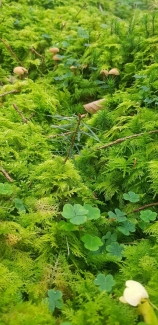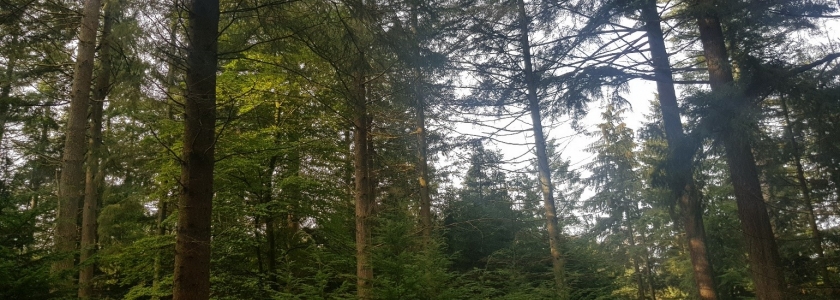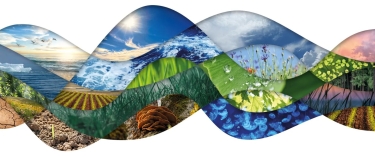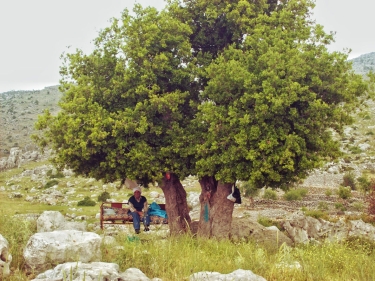Danish Integrated Forest Management

Did you know that Denmark has a relatively low forest cover of 14 percent, but nonetheless has great ambitions regarding the ecosystem services they wish those forests to provide? All the more reason to understand more about how they integrate different forest functions into forest management.
European Forest Institute's researcher Joost de Koning had the chance to find out more about Danish sustainable forest management – or Close-to-Nature Silviculture, as the Danes would call their particular brand – when he participated in the most recent meeting of the European Network INTEGRATE, which is currently chaired by the Danish Nature Agency.
During the first of two planned network meetings (29-31 of October 2019), over fifty participants to the meeting visited Rold Skov, one of the largest continuous forests of Denmark, second only to Gribskov, that will be the scenery for the second meeting in spring 2020.
What fairly few people know, is that Rold Skov’s head forester, Bendt Egede Andersen, was one of the people behind the design and adoption of Close-to-Nature management for all state owned forests in Denmark. He invited professor in silviculture and previous chair of the EFI board, Bo Larsen, to work for the Danish Ministry of Environment for some time to design this forest management paradigm (see: Larsen, 2012). Andersen later went on to become the head forester in Rold Skov, where he now has ample opportunity to test the merits of the management system in the forest. Both men are convinced that the Close-to-Nature management system will over time provide a colorful pallet of forest ecosystem outputs, while remaining stable and robust in the face of societal and climatic changes.
Over the course of the first day, the participants were shown how single-age monocultures of exotic conifer species, which are highly susceptible to disturbances such as windthrow and bark beetles, are being converted into highly productive and stable multi-layered species mixtures of native broadleaves and non-native conifers. If a strong reminder was needed that the single age conifer stands are vulnerable to disturbances, it was given in 2005, when a storm caused quite some damage to these forests. With careful and frequent thinning and group harvesting operations in the spruce and fir stands, accompanied by underplanting with the shade-tolerant beech, the forests are now becoming more diverse and more stable. This diversity in tree species and overall forest structures, should over time become the framework for a stable output of timber and biomass with less susceptibility to forest disturbances.
So far the forestry part. But there is more. In its wake, these measures allow for a more appealing forest image to visitors through the addition of the national tree of Denmark, the stability providing beech tree. The third pillar of integrated forest management and the core focus of the European Network INTEGRATE, is nature protection. Some specific measures have been added to the forest landscape, to support species that are more light dependent. Making smart use of the window of opportunity provided by the storm in 2005, some permanently open places were added to the forest landscape such as meadows, often grazed with hardy cattle or horse breeds to keep them open year round and other places where the natural hydrology has been restored after which they become permanently wet and thus less hospitable to tree establishment. Diving into the forest stands, nature should profit from the larger share of native trees in the forest and the increased age and structural diversity of the stand allowing for a wider range of species to make their home there. When asked if this system was delivering the many benefits it promised since its nation-wide adoption in state forests in 2004, professor Larsen answered: "We are not sure yet. 15 years is a short time for a forest ecosystem. Profitability has not gone down here. What we can see, is that we have more stable forest conditions, which means less wind and bark beetle damage then we could expect under unchanged conditions. Additionally, it is already a more beautiful forest, is it not?"
In addition to sharing experiences on the integration of nature conservation into forest management, the group discussed issues of public participation into forest management decision processes. It turned out that there are many different approaches in European countries. A total of six short presentations were given by participants from throughout Europe on the topic, entailing many interesting examples of how to approach public participation. A participant from the English organisation Forestry England, shared his experiences about the unexpected support from a local hunting club on his plan to reintroduce pine martens in an attempt to combat the exotic grey squirrel. Grey squirrels form a threat to biodiversity by outcompeting the native red squirrel and additionally cause quite some damage to forests through stripping the bark of trees. It turned out many of the local hunters felt a strong connection to the protection of the local forests, which led to a fruitful cooperation resulting in good effects for all parties involved. Take-home messages from this and many other stories shared at the meeting, are that public participation can increase understanding of the reasons behind forest management. Furthermore, it leads to less wicked problems and public criticism in later stages of forest management.
On the second day of the meeting, the network members got together to discuss the much anticipated outcomes of the network evaluation. An external consulted, Michael Hoppe, was asked in spring 2020 to assess the state of the network and to identify points for improvement. From the presentation at the meeting, the network members were able to recognise the image they have of this relatively young network. The increased knowledge sharing on integrated forest management in different European regions is found to be very inspirational and useful. Another valued role of the network is the neutral terrain for discussion on forestry related issues, in an otherwise very politicised environment. Some points of improvement were also suggested. Knowledge attained through network meetings and communications should be more actively distributed at the home front. Another participant made the following point, which was valued by many participants: "We should not go too broad on the topic, but maintain the focus on how to integrate nature in forest management with foresters and other parties involved. We need the development of theory and practice to support the network members."
More technical information on this and upcoming meetings of the European Network INTEGRATE can be found on the webpage of the INFORMAR project.
This post was originally published on the Resilience blog.



